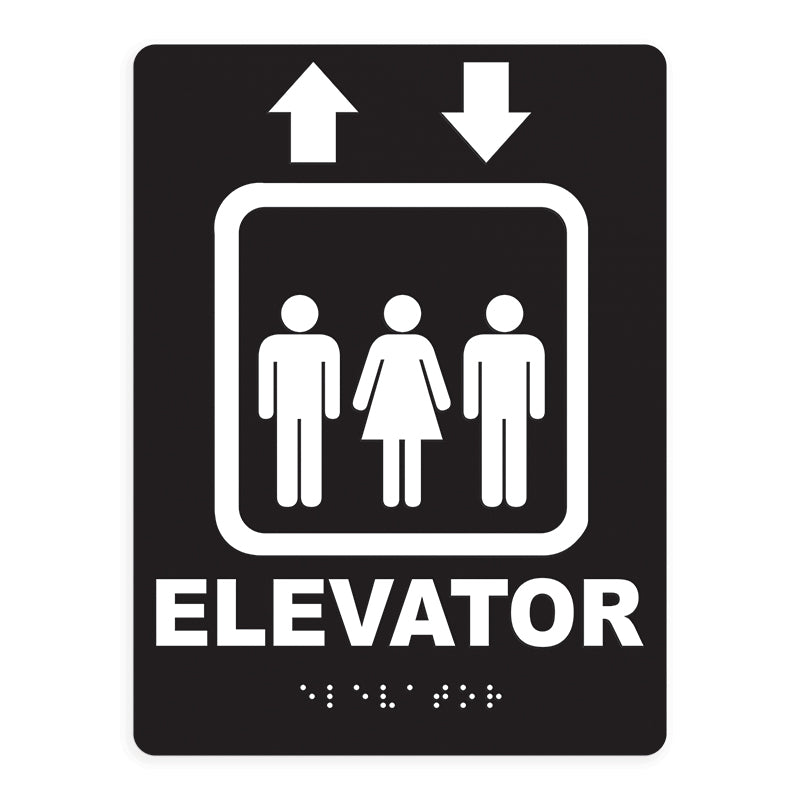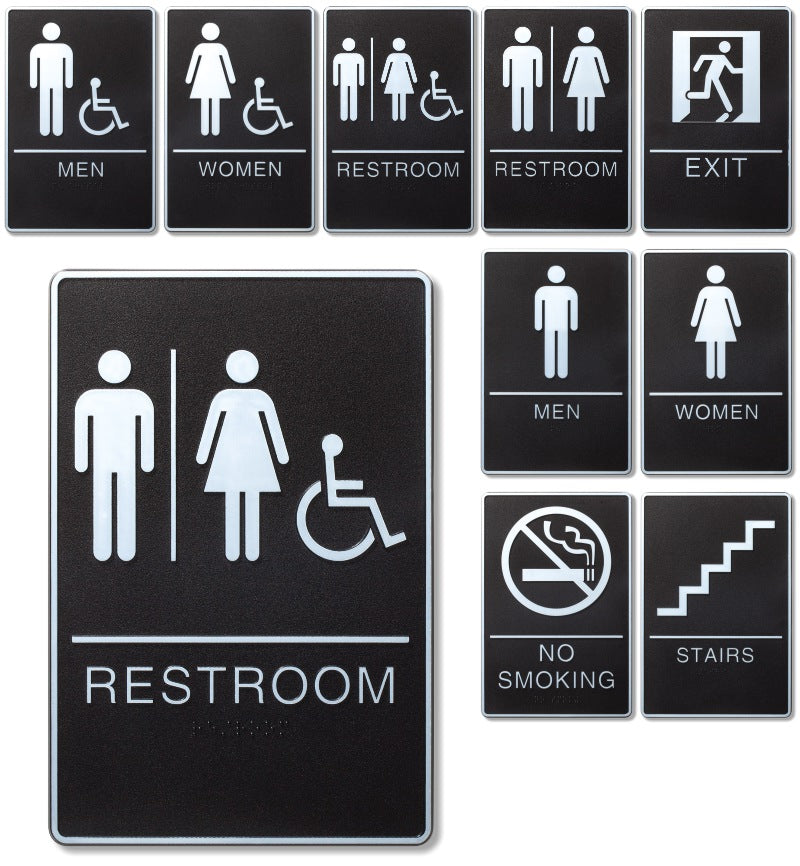The Role of ADA Signs in Complying with Access Requirements
The Role of ADA Signs in Complying with Access Requirements
Blog Article
Discovering the Key Attributes of ADA Indicators for Improved Access
In the world of availability, ADA indications act as silent yet powerful allies, ensuring that spaces are accessible and inclusive for individuals with handicaps. By integrating Braille and tactile components, these signs damage obstacles for the aesthetically impaired, while high-contrast color design and clear fonts accommodate varied aesthetic requirements. Moreover, their tactical placement is not approximate yet instead a computed effort to promote smooth navigation. Yet, past these features exists a much deeper narrative concerning the development of inclusivity and the ongoing dedication to producing fair rooms. What more could these signs represent in our search of universal accessibility?
Importance of ADA Compliance
Making sure conformity with the Americans with Disabilities Act (ADA) is critical for fostering inclusivity and equal access in public areas and workplaces. The ADA, established in 1990, mandates that all public centers, employers, and transportation services fit people with handicaps, guaranteeing they take pleasure in the exact same rights and opportunities as others. Conformity with ADA standards not just satisfies lawful commitments but additionally boosts an organization's reputation by showing its commitment to diversity and inclusivity.
One of the key elements of ADA conformity is the implementation of easily accessible signs. ADA indicators are designed to make certain that individuals with handicaps can quickly navigate through structures and rooms. These indicators should abide by certain guidelines pertaining to size, font style, shade contrast, and positioning to ensure exposure and readability for all. Effectively carried out ADA signage aids eliminate barriers that people with specials needs often experience, thus promoting their self-reliance and confidence (ADA Signs).
Moreover, adhering to ADA regulations can minimize the threat of prospective fines and lawful effects. Organizations that stop working to abide by ADA guidelines might deal with claims or charges, which can be both destructive and financially troublesome to their public photo. Therefore, ADA conformity is integral to fostering an equitable setting for everyone.
Braille and Tactile Elements
The incorporation of Braille and tactile components into ADA signs symbolizes the concepts of access and inclusivity. It is typically put underneath the equivalent text on signs to guarantee that individuals can access the info without visual support.
Responsive components prolong beyond Braille and include raised characters and symbols. These components are made to be discernible by touch, allowing people to recognize room numbers, washrooms, leaves, and other critical locations. The ADA sets details standards relating to the dimension, spacing, and placement of these responsive elements to enhance readability and ensure consistency across different environments.

High-Contrast Color Pattern
High-contrast color design play an essential function in boosting the exposure and readability of ADA signage for individuals with visual disabilities. These systems are necessary as they make best use of the difference in light reflectance between text and background, ensuring that indications are easily noticeable, also from a range. The Americans with Disabilities Act (ADA) mandates the usage of particular shade contrasts to fit those with limited vision, making it an important facet of conformity.
The efficiency of high-contrast shades hinges on their ability to stick out in numerous lighting conditions, consisting of dimly lit settings and locations with glare. Commonly, dark message on a light history or light text on a dark history is utilized to accomplish optimal contrast. Black message on a yellow or white background provides a stark visual difference that helps in quick acknowledgment and understanding.

Legible Fonts and Text Size
When considering the layout of ADA signage, the option of understandable fonts and proper text size can not be overstated. The Americans with Disabilities Act (ADA) mandates that fonts have to be sans-serif and not italic, oblique, manuscript, extremely attractive, or of uncommon form.
The size of the text also plays a crucial duty in availability. According to ADA guidelines, the minimum message height must be 5/8 inch, and it should increase proportionally with watching distance. This is especially vital in public rooms where signage requirements to be read rapidly and precisely. Uniformity in text size adds to a cohesive visual experience, helping individuals in navigating atmospheres efficiently.
Moreover, spacing between letters and lines is important to readability. Sufficient spacing prevents personalities from appearing crowded, improving readability. By adhering to these standards, developers can significantly improve availability, ensuring that signage offers its desired objective for all individuals, despite their aesthetic capabilities.
Effective Placement Methods
Strategic placement of ADA signage is crucial for optimizing access and making certain conformity with lawful requirements. Properly positioned indications guide individuals with handicaps properly, helping with navigation in public rooms. Secret factors to consider consist of visibility, distance, and height. ADA guidelines stipulate that indications ought to be installed navigate here at an elevation in between 48 to 60 inches from the ground to ensure they are within the line of sight for both standing and seated individuals. This conventional elevation array is essential for inclusivity, allowing mobility device individuals and individuals of varying elevations to accessibility information easily.
In addition, indications should be positioned surrounding to the lock side of doors to allow easy identification before entry. Consistency in indication positioning throughout a facility enhances predictability, lowering confusion and boosting total user experience.

Final Thought
ADA indications play an important duty in promoting availability by incorporating attributes look at this site that address the demands of people with handicaps. Including Braille and tactile components guarantees critical details comes to the visually damaged, while high-contrast color design and readable sans-serif typefaces improve visibility throughout various lighting problems. Reliable positioning strategies, such as proper placing elevations and calculated places, additionally a knockout post assist in navigation. These elements collectively cultivate an inclusive environment, underscoring the value of ADA conformity in making sure equivalent gain access to for all.
In the world of ease of access, ADA indications offer as silent yet effective allies, guaranteeing that spaces are comprehensive and navigable for people with disabilities. The ADA, established in 1990, mandates that all public facilities, companies, and transportation services suit people with handicaps, guaranteeing they appreciate the very same civil liberties and chances as others. ADA Signs. ADA indicators are designed to ensure that people with specials needs can conveniently browse through areas and structures. ADA standards stipulate that indicators should be placed at a height between 48 to 60 inches from the ground to ensure they are within the line of view for both standing and seated people.ADA signs play an important duty in promoting access by incorporating attributes that resolve the demands of individuals with specials needs
Report this page